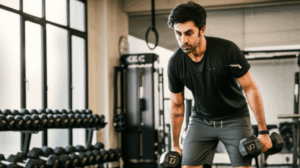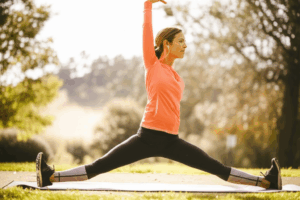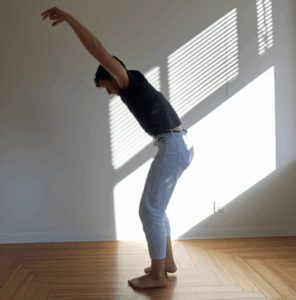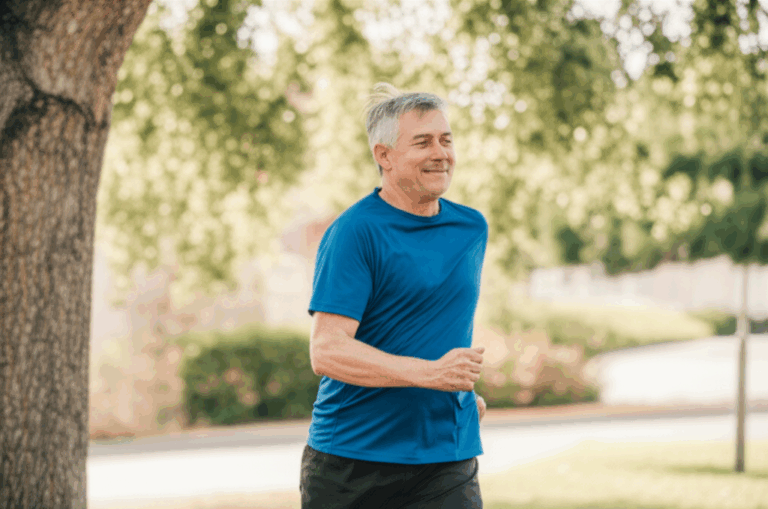As the global population ages, the pursuit of “optimal well-being” in later life has become a critical focus. A recent study underscores a powerful and accessible pathway to achieving this: consistent physical activity and a healthy diet. Far from merely extending lifespan, these lifestyle choices can actively restore and enhance quality of life for older adults, even those over 60 who may have experienced periods of poor health.
This understanding challenges the notion that declining health is an inevitable consequence of aging, instead highlighting modifiable factors that empower individuals to live more fulfilling, resilient, and joyful later years. Optimal well-being is defined not just by the absence of disease, but by freedom from limitations in daily activities, strong mental and physical health, happiness, life satisfaction, and robust social support.
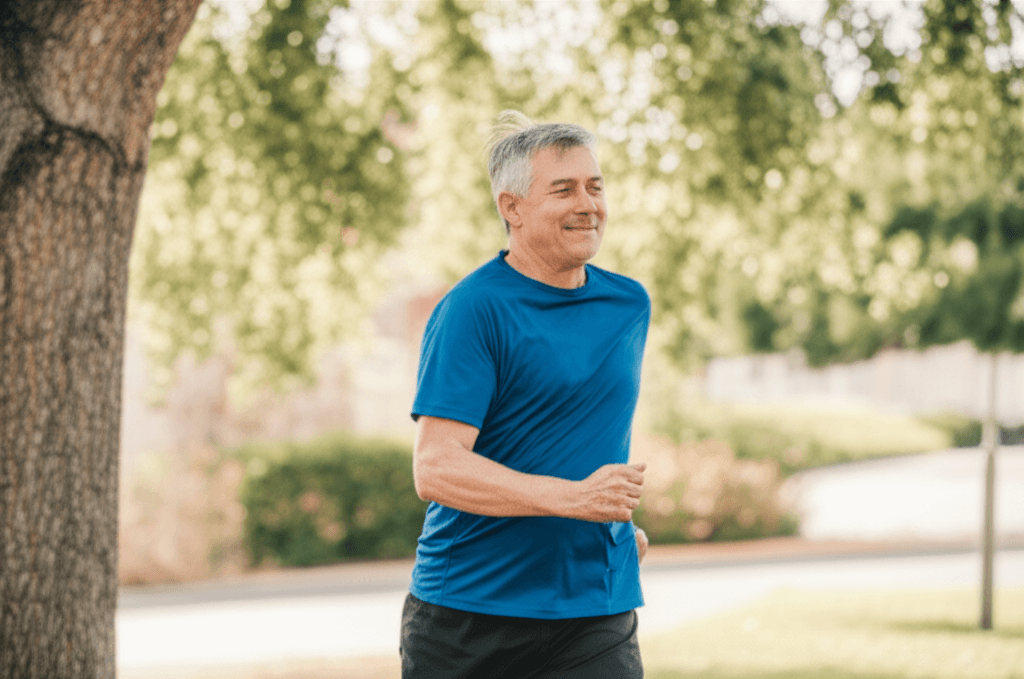
The Profound Impact of Regular Exercise on Healthy Aging
Engaging in regular physical activity is a cornerstone of healthy aging, offering a multitude of benefits that span physical, mental, and emotional health. It’s never too late to start, as research suggests that even moderate exercise can slow cellular decline.
Physical Health Benefits of Staying Active
Exercise directly combats many age-related declines and reduces the risk of chronic conditions:
- Disease Prevention and Management: Regular physical activity significantly lowers the risk of cardiovascular disease (including heart disease and stroke), high blood pressure, type 2 diabetes, high cholesterol, obesity, and several types of cancer (bladder, breast, colon, endometrium, esophagus, kidney, lung, and stomach). For those already living with chronic conditions like arthritis, exercise can minimize symptoms and relieve pain and stiffness.
- Stronger Bones and Muscles: Exercise helps to prevent bone loss and can even restore bone density, protecting against osteoporosis and reducing the risk of fractures. It also helps maintain and build muscle mass and strength, combating sarcopenia (age-related muscle loss) and improving overall functional ability and mobility.
- Improved Balance and Fall Prevention: Enhanced strength, flexibility, and coordination gained through exercise are crucial for improving balance and significantly reducing the risk of falls and fall-related injuries, which are major concerns for older adults.
- Enhanced Cardiovascular and Respiratory Function: Regular activity strengthens the heart and lungs, improves circulation, and can lower blood pressure.
- Boosted Immune System: Exercise can improve overall immune function, helping the body prevent illness and fight off infections more effectively.
Mental and Emotional Well-being Through Movement
The benefits of exercise extend beyond the physical, profoundly influencing mental and emotional health:
- Reduced Depression and Anxiety: Physical activity is a powerful tool for improving mood, reducing feelings of depression and anxiety, and acting as a stress reliever. It triggers the release of endorphins, often referred to as “feel-good hormones.”
- Improved Cognitive Function: Exercise can maintain or improve various aspects of cognitive function, such as the ability to shift between tasks, plan activities, and ignore irrelevant information. Some studies even suggest it may help reduce the incidence of dementia and Alzheimer’s disease biomarkers.
- Better Sleep Quality: Regular exercise can alleviate insomnia and promote better sleep patterns, which is vital for overall well-being in older adults.
- Increased Independence and Self-Confidence: By maintaining physical function and reducing the risk of health issues, exercise supports independent living and boosts self-image and confidence.
- Social Engagement: Exercising with others offers the added benefit of social connection, combating loneliness and fostering a sense of community.
Exercise Recommendations for Older Adults
The Centers for Disease Control and Prevention (CDC) recommends that adults aged 65 and older aim for at least 150 minutes of moderate-intensity aerobic activity per week, such as brisk walking, and at least two days of muscle-strengthening activities. This can be broken down into shorter, manageable periods throughout the day. Types of exercise to incorporate include:
- Aerobic (Cardiovascular) Exercise: Activities like walking, swimming, cycling, or dancing.
- Strength Training: Using weights, resistance bands, or bodyweight exercises to build muscle.
- Balance Exercises: Important for fall prevention.
- Flexibility Exercises: Stretching or yoga to maintain range of motion.

The Vital Role of a Healthy Diet in Healthy Aging
Good nutrition is equally critical for healthy aging, providing the body with the necessary fuel and nutrients to function optimally, manage chronic conditions, and support overall well-being. As we age, our bodies’ nutritional needs change, with metabolism slowing down and the need for certain nutrients increasing.
Dietary Essentials for Older Adults
- Nutrient-Dense Foods: Focus on foods that offer a high amount of nutrients without excessive calories. This includes a wide variety of fruits and vegetables (especially colorful ones), whole grains, lean proteins, and healthy fats.
- Protein for Muscle Mass: Older adults need more protein to preserve muscle mass, which naturally declines after age 50. Good sources include fish, lean meats, poultry, eggs, nuts, beans, quinoa, and soy products.
- Calcium and Vitamin D for Bone Health: Essential for preventing osteoporosis and maintaining bone density. Dairy products (or calcium-fortified alternatives), leafy greens like spinach and bok choy, and fish like salmon and sardines are good sources.
- Fiber for Digestive Health: Whole grains, fruits, and vegetables provide fiber, which aids digestion and can help prevent common age-related issues.
- Hydration: The sense of thirst can diminish with age, making conscious hydration crucial. Drink plenty of water throughout the day. Unsweetened fruit juices, low-fat milk, or fortified soy beverages can also contribute to fluid and nutrient intake.
- Limit Processed Foods and Unhealthy Fats: Reduce intake of foods high in added sugar, saturated fats, sodium, and cholesterol. Use herbs and spices instead of excessive salt for flavoring.
Recommended Eating Patterns
- Mediterranean Diet: Often recommended by experts, this eating pattern emphasizes whole foods like fruits, vegetables, nuts, and whole grains, with less processed food, red meat, saturated fat, and added sugar. It also includes more fish and healthy fats like olive oil.
- Balanced and Varied Diet: Aim for a combination of carbohydrates, proteins, fats, vitamins, and minerals daily.
Overcoming Dietary Challenges in Aging
Aging can present challenges to maintaining a healthy diet, such as a reduced appetite, changes in taste and smell, difficulty chewing or swallowing, medication interactions, or social isolation.
Tips to overcome these include:
- Focus on Enjoyable Healthy Foods: Build your diet around nutritious foods you genuinely like.
- Smaller, More Frequent Meals: This can help ensure adequate nutrient intake even with a reduced appetite.
- Meal Planning and Social Eating: Planning meals can ensure balanced nutrition, and eating with others can combat loneliness and make meals more enjoyable.
- Consult Professionals: Talk to a doctor or dietitian to address specific nutritional needs, manage chronic conditions, or navigate dietary restrictions due to medications.

Holistic Well-Being: Beyond Exercise and Diet
While exercise and diet are paramount, optimal well-being in aging is multifaceted. The International Council on Active Aging (ICAA) identifies seven dimensions of wellness: physical, emotional, intellectual, social, spiritual, vocational, and environmental. Addressing these areas collectively creates a richer, more engaged life.
Other critical factors that contribute to restoring and maintaining well-being include:
- Adequate Sleep: Essential for energy restoration and physical and mental repair.
- Smoking Cessation: Abstaining from smoking is a crucial component of regaining wellness.
- Mental and Social Wellness: Cultivating strong relationships, engaging in community activities, and addressing mental health concerns like anxiety and depression are vital.
- Cognitive Engagement: Staying mentally active through learning new skills, puzzles, and reading helps maintain cognitive function.
- Purpose and Meaning: Engaging in activities that provide personal satisfaction and contribute to society fosters overall well-being.
Conclusion: A Proactive Approach to Aging
The evidence is clear: healthy aging is not a passive process. Through the active pursuit of regular exercise and a nutritious diet, older adults can significantly enhance their physical and mental health, restore functional abilities, and enjoy a higher quality of life. These modifiable lifestyle factors, supported by integrated healthcare and public policy, offer a powerful roadmap for individuals to embrace their later years with vitality and optimal well-being.

